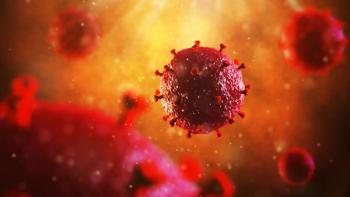
Mediastinal Lymphadenopathy in HIV-Infected Patients: Malignancy Still Common
With the advent of powerful antiretroviral therapies, rates of pulmonary malignancy have declined in HIV-infected patients. But, say results of a new study, we can’t take malignant causes out of the differential yet.
Before the introduction of combination antiretroviral therapy (cART), pulmonary and mediastinal disorders were frequent complications of untreated HIV infection. Mediastinal lymphadenopathy (MLN) has been previously reported to occur in 35% to 40% of patients infected with HIV.1 The potential etiologies of mediastinal lymphadenopathy in HIV-infected patients are numerous and include infectious and malignant causes. Data have been scarce, however, on the distribution of these causes since the introduction of cART.
A recent study published in the journal Respirology2 examined the causes of MLN in HIV-infected patients presenting to a specialized unit. The study was conducted as a retrospective review of the experience of a single center (University College London Hospitals) and included 217 consecutive HIV-infected patients who underwent CT of the chest between 2004 and 2009. MLN was diagnosed in 52 (24%) of these patients. CT scans were re-reviewed by an independent radiologist blinded to the clinical information. The investigators collected demographic, clinical, pathologic, and microbiologic data from this cohort.2
The study found that in patients receiving cART, lymphoma (17%) and bacterial pneumonia (13%) were the most common diagnoses. Tuberculosis was the underlying cause of only 8% of cases in the cART group compared with 26% in patients who did not receive cART. In cART-naive patients, lymphoma and bacterial pneumonia each accounted for 11% of cases.2 Overall, malignancy was diagnosed in 17 patients (33%). Interestingly, lung consolidation on CT scan was associated with a reduced likelihood of malignancy (odds ratio [OR] = 0.03; 95% confidence interval [CI], 0.002-0.422), whereas larger lymph nodes (an increase of 1 cm in the short axis) resulted in a 2.89 increase in the odds of malignancy (95% CI, 1.24-6.71; P = .014).2
Primary care physicians who care for HIV-infected patients should be aware that malignancy continues to be in the differential diagnosis of MLN even in patients receiving cART.
References:
1. Crothers K, Huang L, Goulet JL, et al. HIV infection and risk for incident pulmonary diseases in the combination antiretroviral therapy era. Am J Respir Crit Care Med. 2011;183:388–395. doi:
2. Alçada J, Taylor MN, Shaw PJ, et al. High prevalence of malignancy in HIV-positive patients with mediastinal lymphadenopathy: a study in the era of antiretroviral therapy. Respirology. 2014;19:339-345. doi:
Newsletter
Enhance your clinical practice with the Patient Care newsletter, offering the latest evidence-based guidelines, diagnostic insights, and treatment strategies for primary care physicians.

















































































































































































































































































